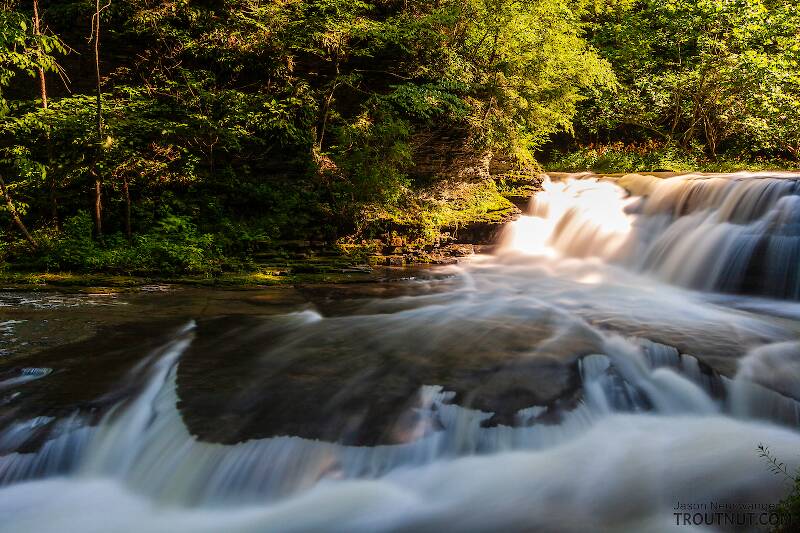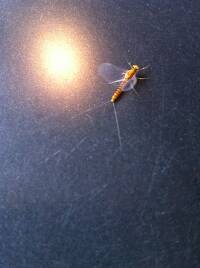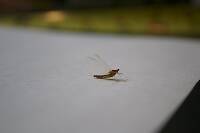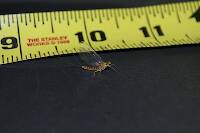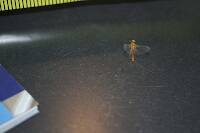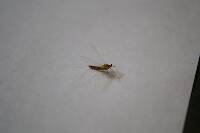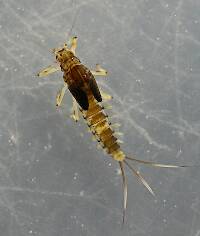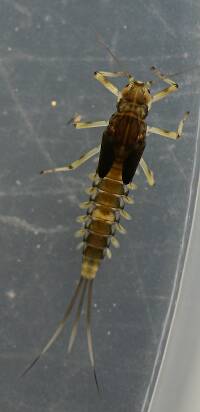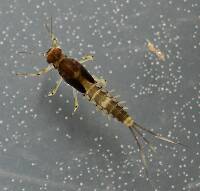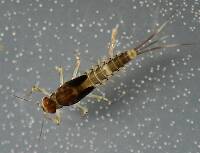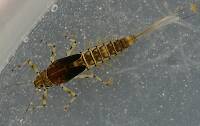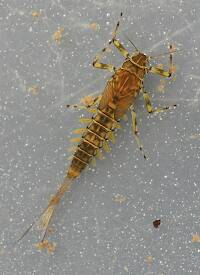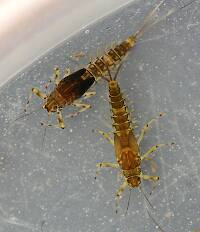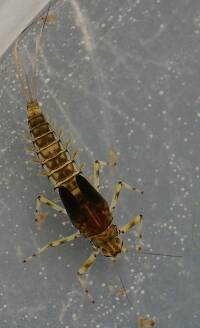
Salmonflies
Pteronarcys californica
The giant Salmonflies of the Western mountains are legendary for their proclivity to elicit consistent dry-fly action and ferocious strikes.
Featured on the forum

Some characteristics from the microscope images for the tentative species id: The postero-lateral projections are found only on segment 9, not segment 8. Based on the key in Jacobus et al. (2014), it appears to key to Neoleptophlebia adoptiva or Neoleptophlebia heteronea, same as this specimen with pretty different abdominal markings. However, distinguishing between those calls for comparing the lengths of the second and third segment of the labial palp, and this one (like the other one) only seems to have two segments. So I'm stuck on them both. It's likely that the fact that they're immature nymphs stymies identification in some important way.

Troutnut is a project started in 2003 by salmonid ecologist Jason "Troutnut" Neuswanger to help anglers and
fly tyers unabashedly embrace the entomological side of the sport. Learn more about Troutnut or
support the project for an enhanced experience here.
Quagmireage has attached this picture to aid in identification. The message is below.
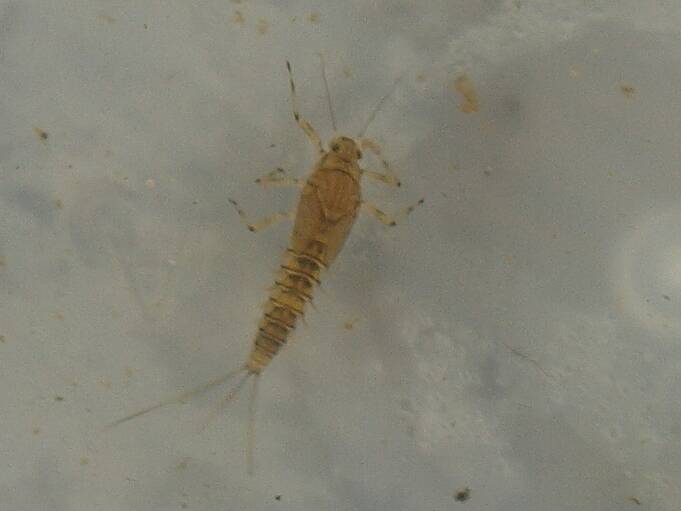
Quagmireage on Mar 28, 2019March 28th, 2019, 6:46 am EDT
Hi folks.
I found this nymph in the Keystone Select section of Laurel Hill Creek, Somerset county PA. It's really small(20-24, maybe smaller). Sorry to be so vague. If anyone has an idea what it might be, I'd love to know.
Thanks!
I found this nymph in the Keystone Select section of Laurel Hill Creek, Somerset county PA. It's really small(20-24, maybe smaller). Sorry to be so vague. If anyone has an idea what it might be, I'd love to know.
Thanks!
Millcreek on Mar 29, 2019March 29th, 2019, 1:14 pm EDT
Clark - I'm pretty sure this is a member of the Baetidae family. As to the genus your guess is as good as mine. You'll need to dissect the mouth parts to figure out genus.
"If we knew what it was we were doing, it would not be called research, would it?"
-Albert Einstein
-Albert Einstein
Millcreek on Mar 29, 2019March 29th, 2019, 1:42 pm EDT
The more I look at it the more it looks like it might be an early instar of Baetis tricaudatus. Google it and see what you think.
"If we knew what it was we were doing, it would not be called research, would it?"
-Albert Einstein
-Albert Einstein
Konchu on Apr 3, 2019April 3rd, 2019, 4:44 am EDT
If the tails are banded, rather than a solid color, then this probably is either Baetis flavistriga or something close. The markings on the abdominal terga also remind me much more of flavistriga than tricaudatus.
Quick Reply
Related Discussions
Topic
Replies
Last Reply
0
Nov 6, 2020
by Troutnut
by Troutnut
1
Jul 22, 2006
by Taxon
by Taxon
7
Jan 19, 2009
by Taxon
by Taxon
6
Aug 21, 2010
by Gutcutter
by Gutcutter
10
Sep 12, 2010
by Martinlf
by Martinlf

